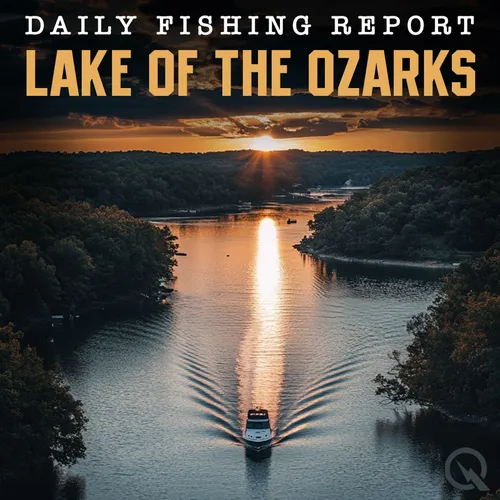Fishing Lake of the Ozarks in Winter: Where to Find Bass, Crappie, and Catfish on a Cold Day
- Author
- Quiet. Please
- Published
- Wed 05 Feb 2025
- Episode Link
- https://www.spreaker.com/episode/fishing-lake-of-the-ozarks-in-winter-where-to-find-bass-crappie-and-catfish-on-a-cold-day--64201378
Hello there, fellow anglers This is Artificial Lure, your go-to expert for all things fishing at Lake of the Ozarks. As of today, February 5, 2025, here’s what you need to know to make your fishing trip a success.
First off, let's talk about the weather. We're in the midst of winter, and the temperatures are quite chilly, with water temperatures hovering around 38 to 40 degrees Fahrenheit. This time of year, the fish are generally more sluggish, but with the right techniques and lures, you can still land some impressive catches.
For largemouth bass, which are one of the most sought-after species here, the best times to fish are during the low light periods, especially around sunrise and sunset. Today, sunrise is at about 6:55 AM, and sunset will be around 5:20 PM. These periods are ideal for using topwater baits, hard jerkbaits, and umbrella rigs. Points, brush piles, and docks, particularly around the Grand Glaize Arm and Niangua Arm, are hot spots for bass. Recently, anglers have been catching bass using crankbaits in the 0-6 foot depth range and hard jerkbaits off points and brush piles[1][4].
Crappie fishing, unfortunately, is expected to be slower this year due to poor recruitment in 2022 and 2023. However, you can still find them around brush piles, especially those on or near points. The Glaize Arm has shown some promise, with about 75 percent of both black and white crappie meeting the 9-inch minimum length limit. Small jigs and minnows are your best bets for crappie[1].
Catfish enthusiasts will be pleased to know that the action for channel catfish, blue catfish, and flathead catfish remains consistent. For channel catfish, keep your bait on or near the bottom, close to the shoreline. Blue catfish are active later into the fall and can be caught year-round, often in open water several feet off the bottom. The mouths of coves, deep flats, and river channel breaks are prime areas. Use live or cut shad for the best results. Flathead catfish can be caught near large boulders or woody cover using live bait like small bluegill or green sunfish[1].
Other species like white bass, hybrid striped bass, and walleye are also present. White bass can be found at windy points, submerged islands, and long, sloping points using artificial lures or shad. Hybrid striped bass are abundant in the Truman Dam tailwater and spring-fed areas of the lake. Walleye are typically caught by trolling crankbaits on steep rocky points and humps or using jigs tipped with minnows, nightcrawlers, or a twister tail grub[1].
Given the current conditions, here are a couple of hot spots to consider:
- The Grand Glaize Arm is a magnet for largemouth bass, with its points, brush piles, and docks.
- The Niangua Arm and Osage River are excellent for crappie, with their coves and points providing ideal habitats.
- For catfish, the Gravois Arm with its rocky and ledged terrain is a dream spot, and the mouths of coves along deep flats and river channel breaks are also highly recommended[1][2].
In summary, while the weather is cold, the fish are still active, and with the right lures and techniques, you can have a very successful day on Lake of the Ozarks. Stay warm, and tight lines
